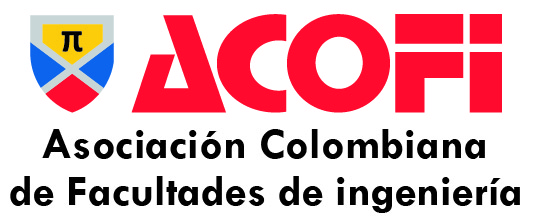Situated learning as an alternative for engineering education by competences
DOI:
https://doi.org/10.26507/rei.v2n4.55Keywords:
situated learning, professional competences, interaction, experiential teachingAbstract
In front of a more and more limited labor market, the increase of the expectations of the employers formation and the demanding demands of qualified engineers, the application of the paradigm of situated learning is profiled located in the formation of competences in Engineering like a necessary, fertile and conducive solution to an effective learning. To bound apprenticeships to situations discontext, as many times is given in the teaching of the engineering, the transfer of knowledge to practical situations fails, because the same ones don’t live.In the article basic principles of situated learning are described; it emphasizes in the importance of the activity, context, culture, mediation, combined construction of meanings and mechanisms of guided participation; likewise, competences notions, classification of competences in the superior education and formation of competences in engineering are presented. Competences are focused that is how to know and to understand (theoretical knowledge of an academic field, the capacity to know and to understand), to know how to act (the practical and operative application of the knowledge to certain situations) to know how to be (the values like integral part in the way of to perceive to the other ones and to live in a social context). Competences represent a combination of attributes (with regard to the knowledge and their applications, aptitudes, dexterities and responsibilities) that they describe the level or grade of sufficiency with which a person is able to carry out them.
At the end it is related the situated learning with the formation of competences in engineering like an educational alternative that potency the application of knowledge and they favor the self-regulation and the skilling like strategies dinamicing of the process. In summary the focus of the situated learning is positive, only it depends on the strategies and teaching goals. The important thing is to know them to link so that they are supplemented and potencing the results of the teaching.
Downloads
References
Bereiter, C., (1997). Situated cognition and how to overcome it. En D. Kirshner y J. A. Whitson (Eds.). Situated cognition. Social, semiotic and psychological perspectives. Mahwah, NJ: Lawrence Erlbaum, pp. 281-300.
Borras, I., (1999). Enseñanza y aprendizaje en la Internet: una aproximación crítica. http//www.didacticahistoria.com/tecedu/tecedud12.htm
Brown, J.; Collins, A. & Duguid, P., (1989). Situated Cognition and the culture of learning, Educational Researcher,18(1), pp. 33-42.
Bruner, Jerome, (1986). Actual minds, possible worlds. Cambridge, MA: Harvard University Press.
Carrascosa, J. y GIL, D. (1985). La metodología de la superficialidad y el aprendizaje de las ciencias. Enseñanza de las Ciencias, 3 (2), pp. 113-120.
Cole, M., (1999). Psicología Cultural. Madrid, Morata.
Daniels, H., (2003). Vigotsky y la pedagogía. Madrid, España: Paidós.
Derry, S., Levin, J. Y Schauble, L., (1995). Stimulating statistical thinking through sutuated simulations. Teaching of Psychology, 22 (1), pp. 51-57.
Dewey, J., (1938/1997). Experience and Education. New York: Simon and Schuster.
Dewey, J., (1989). Cómo pensamos: nueva exposición de la relación entre pensamiento reflexivo y proceso educativo. Barcelona, Paidós.
Engeström, Y. y Cole, M., (1997). Situated cognition in search o fan agenda. En D. Kirshner y J. A. Whitson (Eds.). Situated cognition. Social, semiotic and psychological perspectives. Mahwah, NJ: Lawrence Erlbaum, pp. 301- 309.
Díaz Barriga, F., (2003). Cognición situada y estrategias para el aprendizaje significativo, Revista electrónica de investigación educativa, Vol. 5, Numero 002, Universidad Autónoma de Baja California, México, pp. 105-117.
ICFES (1999). Nuevo examen de estado para el ingreso a la educación superior, ICFES. Bogotá.
Lave, J., (1997). The culture of adquisition and the practice of understanding. En D. Kirshner y J. A. Whitson (Eds.). Situated cognition. Social, semiotic and psychological perspectives. Mahwah, NJ: Lawrence Erlbaum, pp. 301-309.
Lave, J. & Wenger, E., (1991). Situated Learnig Legitimate Peripheral Participation. USA, Cambridge University Press.
Leontiev, A., (1983). El desarrollo del psiquismo. Madrid, Akal editores.
Lozares, C., (2000). La actividad situada y/o el conocimiento socialmente distribuido. http://www.bib.uab.es/pub/papers/02102862n62p97.pdf
Luria, A., (1984). Conciencia y lenguaje. Madrid, Visor.
Maldonado, M. Á., (2003). Las competencias, una opción de vida. Ecoe, Ediciones. Bogotá.
Martínez, J. y otros, (2005). Desarrollo de competencias en ciencia e ingenierías. Hacia una enseñanza problematizada. Cooperativa Editorial Magisterio. Bogotá.
Porlán, R. (1993). Constructivismo y escuela. Hacia un modelo de enseñanza aprendizaje.
Rogoff, B., (1993). Aprendices del pensamiento. Barcelona, Paidós.
Rogoff, B., (2003). La naturaleza cultural del desarrollo humano. Nueva York: Universidad de Oxford.
Rogoff, B., Goodman Turkanis, C., y Bartlett, L., (2001). El aprender junto: Niños y adultos en una comunidad de la escuela. Nueva York: Universidad de Oxford.
Streibel, M., (1989). Diseño instructivo y aprendizaje situado: ¿es posible un maridaje?, Revista de Educación, 289, pp. 215-234.
Tobón, S., (2004). Formación basada en competencias. Ecoe Ediciones. Bogotá.
Vygotsky, L. S., (1985). Pensamiento y lenguaje, Buenos Aires, Pléyade.
Wenger, E., (2001). Comunidades de Práctica. Barcelona, Paidós.
Wertsch, J., (1988). Vigotsky y la formación social de la mente. Barcelona, Paidós.
Downloads
Published
How to Cite
Issue
Section
License
Total or partial reproduction of the documents published in the journal is authorized only when the source and author are cited.
| Article metrics | |
|---|---|
| Abstract views | |
| Galley vies | |
| PDF Views | |
| HTML views | |
| Other views | |









